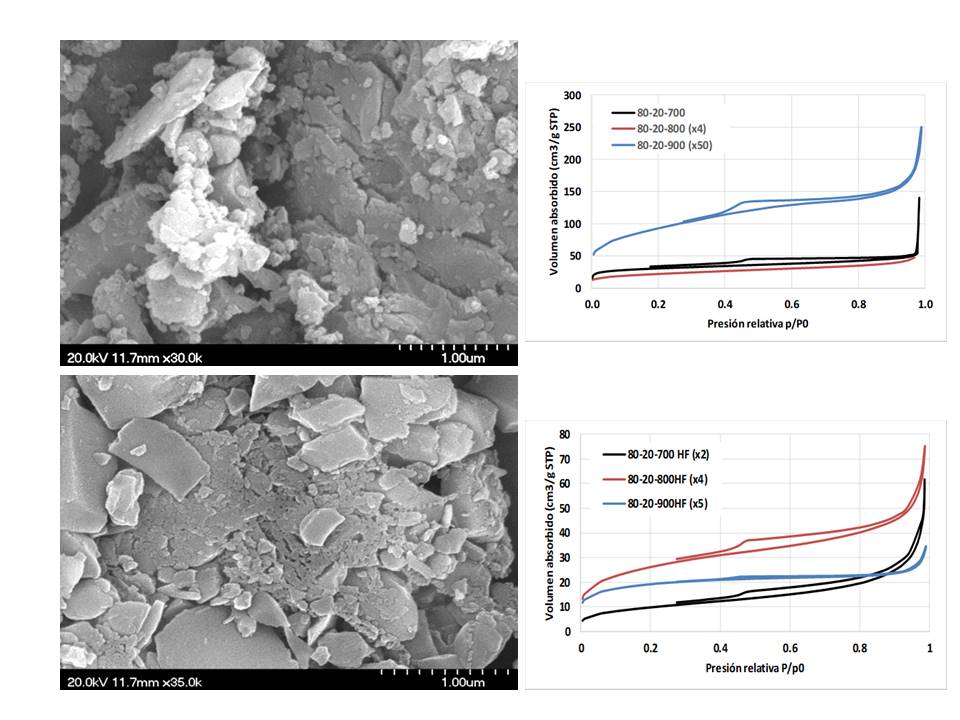In this TFG new materials have been developed to be used as electrodes of supercapacitors. To this end, silico oxycarbide nanocomposites have been obtained from the synthesis of hybrid or polymeric pre-ceramic materials. Graphene carbon materials have been achieved from the elimination of non-active phases (SiO2) through HF leaching. The materials have been characterized in their chemical composition and their structure and microstructure for possible use as supercapacitors. Pre-ceramic materials have been obtained using and polymer modified with divinyl benzene in concentrations 70/30, 80/20 and 90/10 in weight. It has been proven how phases of beta-SiC, SiO2 and graphite dispersed in the matrix are found in the silicon oxycarbides obtained. These materials have been leached with HF in order to eliminate the SiO2 phase and it has been observed the removing of the most part of SiO2 but beta-SiC oxidizes and free carbon becomes unchanged. This results in a significant increase in the specific area, from 1 to 50 m2.g-1, while carbon nanodomains increase in size from 3.8 nm to 6.0 nm.
In a second part the materials have been treated in the gaseous medium with Cl2 at 700, 800 and 900 C, and the SiO2 phase has been completely removed and the specific surfaces have reached 3000 m2.g-1 with a wide range of micropores and mesopores suitable for typical electrolytes.





